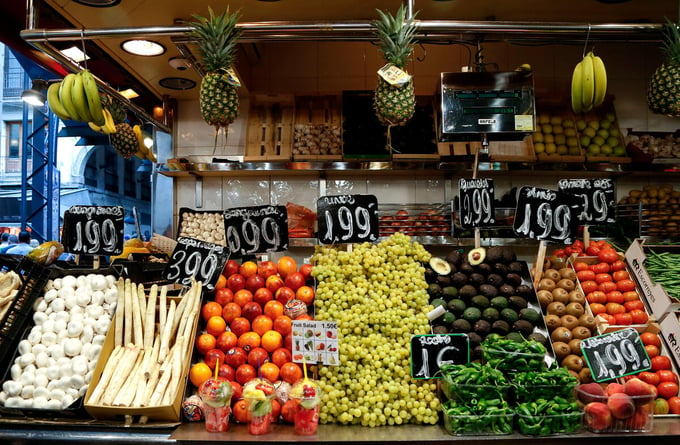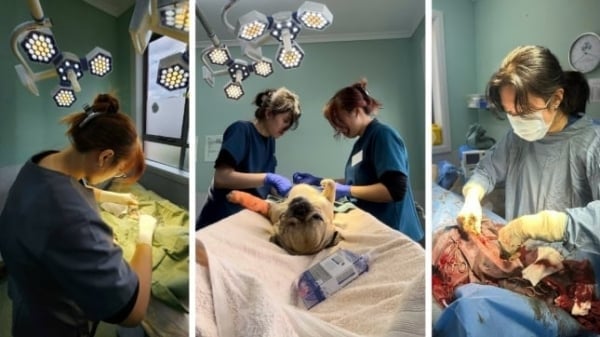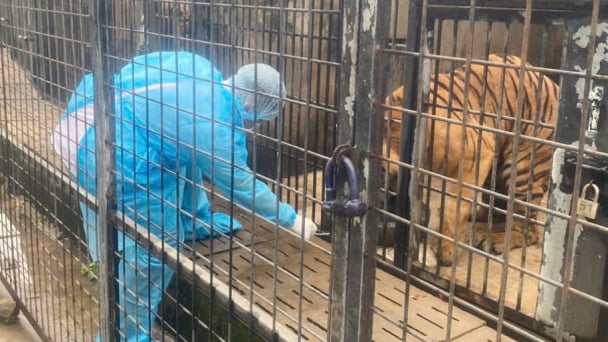May 17, 2025 | 17:43 GMT +7
May 17, 2025 | 17:43 GMT +7
Hotline: 0913.378.918
May 17, 2025 | 17:43 GMT +7
Hotline: 0913.378.918

Insufficient intake of whole grains, fruits, and vegetables, along with other dietary risks, are fueling health-related hidden costs in agrifood systems.
A refined study by the Food and Agriculture Organization of the United Nations (FAO) involving 156 countries confirms that hidden costs within global agrifood systems amount to approximately $12 trillion annually. Of this figure, around 70 percent ($8.1 trillion) arise from unhealthy dietary patterns and are linked to alarming non-communicable diseases (NCDs) such as heart disease, stroke, and diabetes, far exceeding the costs related to environmental degradation and social inequalities
The State of Food and Agriculture 2024 (SOFA), builds on the 2023 edition to provide an even more in-depth analysis, utilizing true cost accounting to expose the full range of costs and benefits associated with food production, distribution, and consumption, including those that are not reflected in market prices – the so-called “hidden costs and benefits”. The report updates those cost estimates, divides them by agrifood system types, and charts a course for transformative change in our agrifood systems.
The study details how global hidden costs are largely driven by health hidden costs, followed by environmental hidden costs, in more industrialized agrifood systems in upper-middle- and high-income countries.
In examining health impacts, the report identifies 13 dietary risk factors. These include insufficient intake of whole grains, fruits, and vegetables; excessive sodium consumption; and high intake of red and processed meats, with notable differences across various agrifood systems.
Historically, agrifood systems have transitioned from traditional to industrial, each with varied outcomes and hidden costs. For this reason, the report explores how hidden costs manifest themselves in different agrifood system types worldwide.
To facilitate analysis, the research introduces a typology that categorizes agrifood systems into six distinct groups: protracted crisis, traditional, expanding, diversifying, formalizing, and industrial. This framework allows for a targeted understanding of the unique challenges and opportunities inherent to each system, enabling the development of tailored policies and interventions.
For instance, while diets low in whole grains are the leading dietary risk factor across most agrifood systems, in protracted crisis systems (those experiencing prolonged conflict, instability, and widespread food insecurity) and traditional systems (characterized by lower productivity, limited technology adoption, and shorter value chains), the primary concern is a low intake of fruits and vegetables.
High sodium intake is another significant concern, exhibiting an upward trend as agrifood systems evolve from traditional to formalizing, peaking in the latter and then decreasing in industrial systems. Conversely, high consumption of processed and red meat steadily increases throughout the transition from traditional to industrial systems, where it ranks among the top three dietary risks.
Beyond dietary risks, the environmental impact of unsustainable agricultural practices contributes substantially to the hidden cost burden. Costs associated with greenhouse gas emissions, nitrogen runoff, land-use changes, and water pollution are particularly high in countries with diversifying agrifood systems – where rapid economic growth is coupled with evolving consumption and production patterns – reaching an estimated $720 billion. Formalizing and industrial agrifood systems also face significant environmental costs. However, countries facing protracted crises bear the highest relative environmental costs, equivalent to 20 percent of their GDP.
Social costs, including poverty and undernourishment, are most prevalent in traditional agrifood systems and those affected by protracted crises. These social costs represent 8 and 18 percent of GDP, respectively, highlighting the urgent need for improved livelihoods and integrated humanitarian, development, and peacebuilding efforts.
SOFA 2024 underscores the importance of adapting to local contexts and capturing stakeholder priorities. This is illustrated through case studies representing diverse countries and agrifood system types, including Australia, Brazil, Colombia, Ethiopia, India, and the United Kingdom.
Overall, the report calls for a value-driven transformation of agrifood systems to make them more sustainable, resilient, inclusive, and efficient. This requires going beyond traditional economic measures like GDP by utilizing true cost accounting to recognize hidden costs. With this approach, decision-makers can make more informed choices that enhance the societal value of agrifood systems, acknowledging their essential roles in food security, nutrition, biodiversity conservation, and cultural identity. Achieving this transformation also demands bridging sectoral divides, aligning policies across health, agriculture, and the environment, and ensuring that the benefits and costs are equitably shared among all stakeholders.
‘’The choices we make now, the priorities we set and the solutions we implement will determine our shared future. Real change begins with individual actions and initiatives, supported by enabling policies and targeted investments. The transformation of global agrifood systems is fundamental to achieving the SDGs and securing a prosperous future for all,” said FAO Director-General QU Dongyu.
The report stresses that this transformation requires collective action, involving primary producers, agribusinesses, governments, financial institutions, international organizations, and consumers. While addressing hidden costs will result in uneven impacts across stakeholders, countries, and timeframes, supportive policies and regulations can help minimize disruptions, particularly for small-scale producers and agribusinesses, by promoting early adoption of sustainable practices and protecting vulnerable social groups.
(FAO)

(VAN) The United Nations designated 22 May as the International Day for Biodiversity 2025 with the theme 'Harmony with nature and sustainable development.'
![Multi-channel, multi-directional Vietnamese agricultural markets: [8] A national strategy is needed](https://t.ex-cdn.com/nongnghiepmoitruong.vn/608w/files/phucpm/2025/05/15/1435-thi-truong-nong-san-viet-da-kenh-da-huongbai-8-can-mot-chien-luoc-quoc-gia-084750_728.jpg)
(VAN) The Chairman of Hung Nhon Group shared: ‘Opening up and tapping into new markets is the right and strategic direction for Vietnam's agricultural sector.’

(VAN) Food waste has become a serious issue in modern society, especially in rapidly urbanizing and developing cities like Hanoi.
![Multi-channel, multi-directional Vietnamese agricultural markets: [7] Deep processing makes global reach easy](https://t.ex-cdn.com/nongnghiepmoitruong.vn/608w/files/huytd/2025/05/16/2946-che-bien-sau-chia-khoa-vang-nang-tam-nong-san-viet-tren-ban-do-the-gioi-080603_110-093858.jpg)
(VAN) The application of deep processing technology is helping Vietnamese agricultural products enhance their value, create competitive advantages, and open doors to conquer global consumers.
![Multi-channel, multi-directional Vietnamese agricultural markets: [6] Agri products go online](https://t.ex-cdn.com/nongnghiepmoitruong.vn/608w/files/content/2024/12/10/1-113313_954.jpg)
(VAN) Bringing agri products onto e-commerce platforms is an effective way to build a brand that many businesses, cooperatives, and agricultural production households are doing.

(VAN) Veterinary training should focus on quality, not just quantity. Veterinarians also need more options to pursue specialized training.

(VAN) The veterinary industry needs to be viewed objectively and further invested in to properly demonstrate its role and importance in the new context.